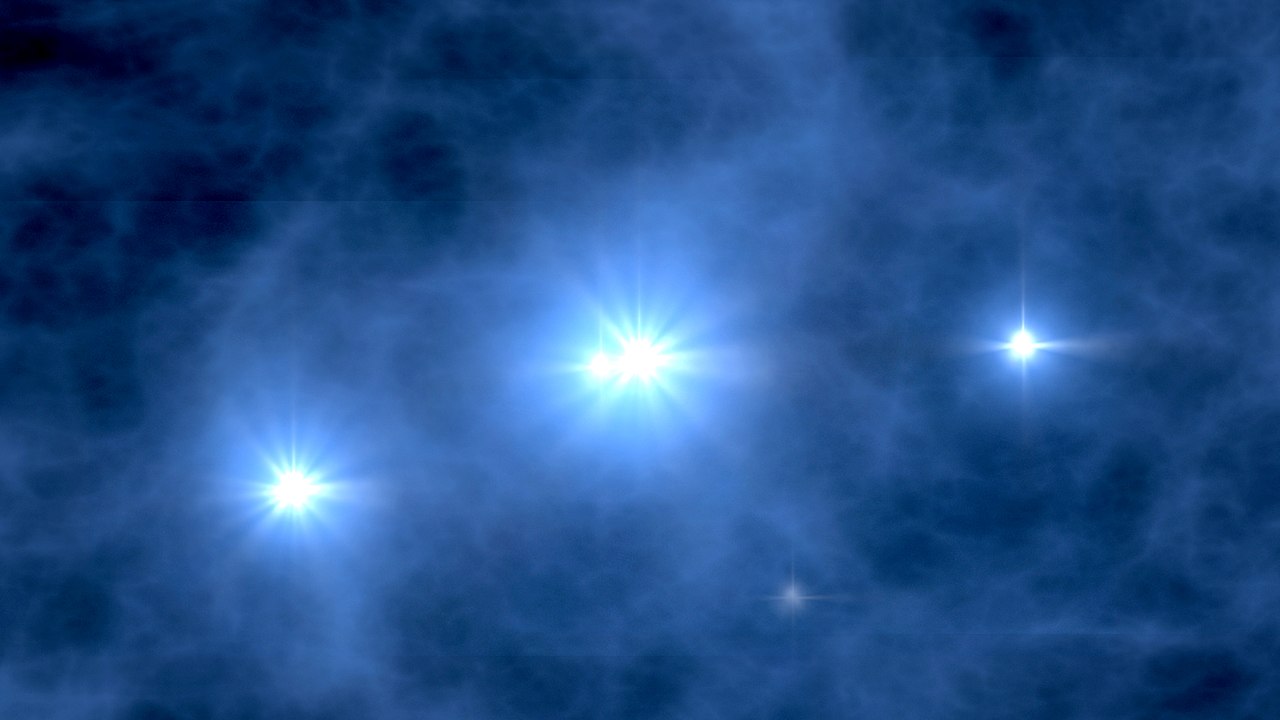How can we explore Saturn’s moon, Enceladus, to include its surface and subsurface ocean, with the goal of potentially discovering life as we know it? This is what a recent study presented at the American Geophysical Union (AGU) 2024 Fall Meeting hopes to address as a team of students and researchers proposed the Thermal Investigation of Geothermal Regions of Enceladus (TIGRE) mission concept, which is designed to conduct in-depth exploration of Enceladus with an orbiter, lander, and drill, while laying the groundwork for future missions to icy moons throughout the solar system.
Continue reading “Sampling Enceladus’ Subsurface Ocean with TIGRE Mission Concept”How Astronomers Make Deep Maps of the Milky Way

Have you ever wondered how astronomers manage to map out the Milky Way when it’s so incredibly vast? One of the most powerful tools is something called 21cm radiation.
Continue reading “How Astronomers Make Deep Maps of the Milky Way”NASA Downgrades the Risk of 2024 YR4 to Below 1%
NASA astronomers have been continuing to monitor the trajectory of asteroid 2024 YR4. The initial calculations suggested a 1.3% probability of an Earth impact event, which temporarily increased to 3.1% as more data came in. However, and with a sigh of relief, recent analysis brings encouraging news: the Earth impact probability has decreased significantly to 0.28%, though calculations now show a 1% chance of lunar impact. Observations will continue with the James Webb Space Telescope so stay tuned.
Continue reading “NASA Downgrades the Risk of 2024 YR4 to Below 1%”Strange Winds Blow Through this Exoplanet’s Atmosphere

Some exoplanets have characteristics totally alien to our Solar System. Hot Jupiters are one such type. They can have orbital periods of less than 10 days and surface temperatures that can climb to well over 4,000 K (3,730 °C or 6,740 °F). Unlike any planets in our system, they’re usually tidally locked.
Astronomers probed the atmosphere of one hot Jupiter and found some strange winds blowing.
Continue reading “Strange Winds Blow Through this Exoplanet’s Atmosphere”Fluffy Molecular Clouds Formed Stars in the Early Universe

Stars form in Giant Molecular Clouds (GMCs), vast clouds of mostly hydrogen that can span tens of light years. These stellar nurseries can form thousands of stars. Astronomers know this because they observe these regions in the Milky Way and the Magellanic Clouds and watch as stars take shape.
But the Universe is more than 13 billion years old and has been forming stars for almost that entire time. The early Universe was different in notable ways. Was star formation any different in the early Universe?
Continue reading “Fluffy Molecular Clouds Formed Stars in the Early Universe”If You’re Going to Call Aliens, Use This Number
Let’s dive into one of those cosmic curiosities that’s bound to blow your mind: how we might chat with aliens. And no, I’m not talking about elaborate coded messages or flashy signals. We’re talking about something incredibly fundamental—21cm radiation.
Continue reading “If You’re Going to Call Aliens, Use This Number”Neutral Hydrogen: The Next Big Game in Cosmology

The majority of the universe remains unmapped, but we have a potential window into it through a peculiar light emitted by nothing other than neutral hydrogen.
Continue reading “Neutral Hydrogen: The Next Big Game in Cosmology”The Artemis II Boosters are Stacked
NASA engineers are pressing ahead with preparations for the Artemis II mission unless someone tells them otherwise. The ambitious flight will send four astronauts on a trajectory similar to Apollo 8’s historic lunar journey, with the crew traveling around the Moon in an Orion Capsule before returning to Earth. A crucial milestone in the mission preparations was reached as technicians completed the assembly of the Space Launch System’s twin solid rocket boosters inside the Vehicle Assembly Building. The stacking process began in late November 2024 and concluded on February 19th.
Antarctica’s Deception Island is the Perfect Place to Practice Exploring Mars

It’s not uncommon for space missions to be tested here on planet Earth. With the plethora of missions that have been sent to Mars it is becoming increasingly likely that the red planet was once warmer, wetter and more habitable than it is today. To find evidence of this, a new paper proposes that Deception Island in Antarctica is one of the best places on Earth to simulate the Martian environment. The paper identifies 30 sites on the island that correspond well to places on Mars.
Continue reading “Antarctica’s Deception Island is the Perfect Place to Practice Exploring Mars”Does Jupiter’s Moon Callisto Have an Ocean? The Evidence is Mounting

Some of our Solar System’s moons have become very enticing targets in the search for life. There’s growing evidence that some of them have oceans under layers of ice and that these oceans are warm and rich in prebiotic chemistry. NASA’s Europa Clipper is on its way to examine Jupiter’s moon Europa, and the ESA’s Jupiter Icy Moons Explorer is also on its way to the Jovian system to explore some of its icy moons.
While the presence of an ocean on Europa is becoming widely accepted, there’s more uncertainty about the other Galilean moons. However, new evidence suggests that Callisto is very likely an ocean moon, too.
Continue reading “Does Jupiter’s Moon Callisto Have an Ocean? The Evidence is Mounting”



